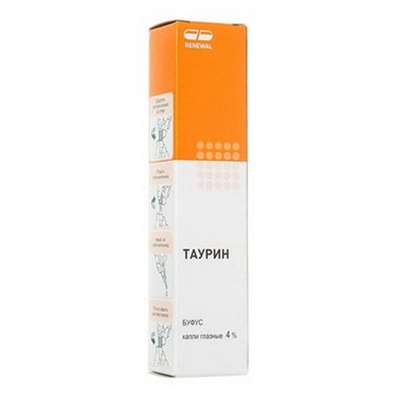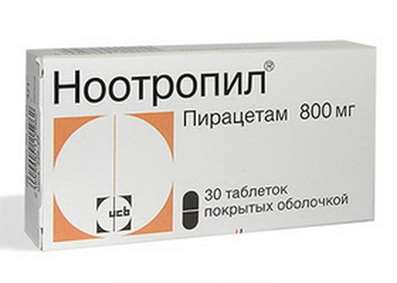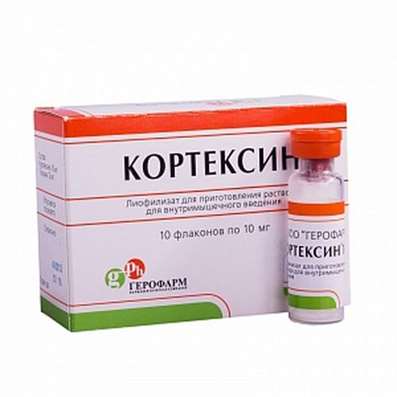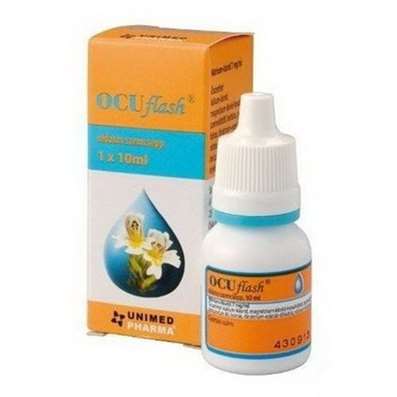Instruction for use: Zuclopenthixol
I want this, give me price
Latin name of substance Zuclopenthixol
Zuclopenthixolum (genus. Zuclopenthixoli)
Chemical name
4- [3- (2-Chloro-9H-thioxanthen-9-ylidene) propyl] -1-piperazineethanol
Gross formula
C22H25ClN2OS
Pharmacological group:
Neuroleptics
The nosological classification (ICD-10)
F03 Dementia, unspecified: Degenerative dementia; Dementia; Dementia presenilnaya; Dementia senile; Primary degenerative dementia; Senile dementia; Senile dementia of the Alzheimer's type; Senile dementia; Syndromes of dementia; Dementia; Mixed Dementia; Mixed forms of dementia; Senile dementia; Senile Dementia
F09 Organic or symptomatic mental disorder, unspecified: Organic CNS damage; Organic Psychology; Endogenous psychosis; Psycho-organic syndrome; Psycho-organic senile syndrome; Psycho-organic syndrome in old age; Psychotic disorder in organic diseases of the central nervous system; The psycho-organic syndrome; Vascular psychosis; An age-old pseudomelanchia; Exogenous-organic psychosis; Endogenous psychosis; Pseudomelanchia senile
F20 Schizophrenia: Schizophrenic Conditions; An exacerbation of schizophrenia; Schizophrenia; Chronic schizophrenia; Dementia praecox; Bleuler's disease; Psychotic discordant; Dementia early; The febrile form of schizophrenia; Chronic schizophrenic disorder; Psychosis of the schizophrenic type; Acute form of schizophrenia; Acute schizophrenic disorder; Cerebral Organic Insufficiency in Schizophrenia; Acute attack of schizophrenia; Schizophrenic psychosis; Acute schizophrenia; Sluggish schizophrenia; Sluggish schizophrenia with apathoabulic disorders; Acute stage of schizophrenia with agitation
F20.0 Paranoid schizophrenia: The paranoid form of schizophrenia
F29 Inorganic psychosis, unspecified: Childhood psychoses; Psychomotor agitation in psychoses; Hallucinatory-delusional disorders; Hallucinatory-delusional syndrome; Intoxication psychosis; Manic-delusional disorders; Manic chronic psychosis; Manic psychosis; Acute psychosis; paranoid psychosis; Paranoid psychosis; Subacute psychosis; Presenile psychosis; Psychosis; Intoxication psychosis; Psychosis is paranoid; Psychosis in children; Reactive psychosis; Chronic psychosis; Chronic hallucinatory psychosis; Chronic psychosis; Chronic psychotic disorder; Schizophrenic psychosis
F30 Manic episode: Manic-depressive disorder; Manic agitation; Manic state; Manic conditions; Manic condition; Manic syndrome;Acute manic syndrome
F32.9 Depressive episode, unspecified: Depressive and anxious-depressive conditions in patients with alcoholism, especially during the period of abstinence; Depressive disorders; Depressive states; Depression Depletion; Neurotic reactive-depressive conditions; Postpsychotic depression; Episodes of depression
F79 Mental retardation, unspecified: Mental retardation; Infantilism mental; Violation of mental activity; Oligophrenia; Lag behind mental development; Slowed development of intellectual abilities in children and adolescents; Delayed mental development in children; Maloumia; Oligopsihia; Mental failure; Impaired mental function; Lag behind in mental development; Lack of intellectual development in children; Lack of mental development in children; Mental retardation; Lack of mental development in children; Mental retardation
F91 Behavioral disorders: Juvenile and other behavioral disorders; Destructive behavior; Violation of behavior; Behavior Disorders; Mixed behavioral disorders; Behavioral Disorder; Behavioral disorder in adolescents with 15 years of age and adults; Violations in behavior; Behavioral disorders in childhood; Behavioral disorders in old age; Behavioral disorders in children; Behavioral disorders in children
R41.0 Abnormal orientation, unspecified: Disorientation; Violation of consciousness of toxic origin; Violation of consciousness of traumatic origin; Disorientation status; Confusion of consciousness; Impairment of consciousness; Orientation disorders; Sopor
R41.8.0 * Intellectual-mnestic disorders: Secondary impairments of mnestic functions; Difficulty concentrating; Difficulty of mental activity; Intellectual insufficiency; Intellectual-mnestic violation; Intellectual-mnestic disorder; Infantilism mental; Cognitive impairment; Intellectual disability; Breach of mnestic functions; Violation of mental activity; Thinking disorder; Impairment of mental performance; Dysfunction of mental function; Thinking disorders; The weakening of intellectual productivity; Lag behind mental development; Primary disorders of mnestic functions; Decrease in intellectual productivity; Decrease of intellectual-mnestic functions; Scattering; Mental Disorders; Disorder of thinking; Decreased intellectual productivity; Reduction of intellectual-mnestic functions; Decreased intellectual capacity; Decreased intellectual ability; Decreased intellectual abilities in elderly patients; Decreased mental function; Decreased memory in old age; Decreased mental activity; Decreased intellectual level; The deterioration of intellectual-mnestic functions; Chronic mental performance disorders
R44.3 Hallucinations, unspecified: Hallucinatory conditions; Hallucinations; Acute hallucinatory state; Chronic hallucinatory conditions
R45.1 Anxiety and agitation: Agitation; Anxiety; Explosive excitability; Internal stimulation; Excitability; Excitation; Excitation acute; Psychomotor agitation; Hyperexcitability; Motor excitement; Cessation of psychomotor agitation; Nervous excitement; Restlessness; Night trouble; Acute stage of schizophrenia with agitation; Acute mental agitation; Paroxysm of excitation; Overexcitation; Increased excitability; Increased nervous excitability; Increased emotional and cardiac excitability; Increased agitation; Mental arousal; Psychomotor agitation; Psychomotor agitation in psychoses; Psychomotor agitation of an epileptic nature; Psychomotor paroxysm; Psychomotor fit; Symptoms of Excitation; Symptoms of psychomotor agitation; The state of agitation; A state of anxiety; Excitation status; A state of heightened concern; The state of psychomotor agitation; Conditions of anxiety; Excitation conditions; The state of excitement in somatic diseases; Excitation level; Feelings of anxiety; Emotional arousal
R54 Old age: External signs of aging; Age-related eye disease; Age-related visual impairment; Age-related vascular disease; Age-related constipation; Age-related changes in visual acuity; Age-related involuntary changes in the brain; Age disorders; Age-related hearing impairment; Gerontological practice; Dementia senile; Deficiency of calcium and vitamin D3 in the elderly; Vascular and age-related brain disease; Involutional depression; Correction of metabolism in elderly and senile age; Insufficiency of nutrition in the elderly and senile age.; Senile dementia; Senile Depression; Senylic coverings; Senile psychosis; Age-Involution Syndrome; Hearing loss age; Aging; Aging of the brain; Aging of the body; Senile dementia; Old age; Structural Involutionary Psychosis; Static psychosis; Memory impairment in elderly patients; Behavioral disorders in old age
CAS code
982-24-1
Characteristics of the substance Zuclopenthixol
Neuroleptic, thioxanthene derivative.
Pharmacology
Pharmacological action - antipsychotic, neuroleptic, sedative.
Affects the dopaminergic and adrenergic neurotransmission in the central nervous system. Antipsychotic effect is due to blockade of dopamine D2 receptors of the mesolimbic and mesocortical system, sedative - adrenoreceptor blockade of the reticular formation of the brainstem.
Bioavailability after oral administration is about 45%. Medicinal forms for the / m introduction are subjected to enzymatic cleavage with the release of the active component. Cmax is achieved with oral administration after 4 hours, in / m introduction - after 36 hours, in / m injection of the depot form - after 7 days. Equilibrium concentration in the serum is achieved in most patients with oral administration for 5-7 days, with the introduction of a depot form - after about 3 months. The volume of distribution is approximately 20 l / kg, binding to plasma proteins is 98-99%. In high concentrations it is found in the liver, lungs, intestines and kidneys, in smaller concentrations in the heart, spleen, brain and blood. Slightly penetrates the placental barrier and in small amounts excreted in breast milk. It is metabolized in three ways: sulfooxidation, N-dealkylation and conjugation with glucuronic acid with the formation of inactive metabolites, which are excreted mainly with feces and to a lesser degree (10%) in the urine (0.1% of the dose is excreted unchanged in the urine). T1 / 2 for oral administration is approximately 20 hours, for a solution for injection - about 32 hours, for a depot form - 19 days. The system clearance is 0.86 (± 0.14) l / min. The pharmacokinetic parameters of zuclopentixol do not depend on the age of the patients. Influence of renal and hepatic impairment was not investigated, however, based on predominantly extrarenal elimination, renal dysfunction should not significantly affect the concentration of the substance in the plasma (in contrast to severe violations of the liver function).
It most effectively eliminates psychotic manifestations in patients with behavioral disorders. In the initial period of therapy, a dose-dependent nonspecific sedative effect is expressed, which is quickly followed by tolerance. With parenteral administration, the antipsychotic effect is manifested after 4 hours and lasts 2-3 days, the sedative effect manifests itself 2 hours after the administration, reaches a maximum for 8 hours and then significantly decreases. The depot form is indicated for prolonged (maintenance) therapy, especially in patients with poor oral tolerance.
Application of Zuclopentixol
Tablets: schizophrenia (acute and chronic) and other psychotic disorders, with hallucinations, paranoid delusions and impaired thinking; states of agitation, increased anxiety, hostility, aggression; manic phase of manic-depressive psychosis; mental retardation, combined with psychomotor agitation, agitation and other behavioral disorders; senile dementia with paranoid ideas, disorientation, behavioral disorders, confusion.
Solution for injection: initial treatment of acute psychoses, including manic conditions, and chronic psychoses in the phase of exacerbation.
Depot-form: schizophrenia (acute and chronic) and other psychotic disorders, with hallucinations, paranoid delusions and mental disorders; a state of agitation, heightened anxiety, hostility, aggression.
Contraindications
Hypersensitivity, acute poisoning with alcohol, barbiturates, opiates, coma, dysfunction of the hematopoietic system, pheochromocytoma, pregnancy, breast-feeding.
Restrictions on the use
Convulsive syndrome, progressive diseases of the liver, kidneys, cardiovascular diseases (including arrhythmia, severe hypotension, orthostatic disorders of the regulation of blood circulation), lesions of the brain stem, incl. Parkinson's disease, prolactin-dependent tumors.
Application in pregnancy and lactation
Use during pregnancy and during lactation is possible if the expected effect of therapy exceeds the potential risk for the fetus (animal experiments have revealed a teratogenic and embryotoxic effect, no studies have been performed in humans) and a newborn (less than 1% of the dose taken by the mother enters the baby's body ).
Side effects of Zuclopenthixol
From the nervous system and sensory organs: extrapyramidal disorders (muscle rigidity (24%), hypo- or akinesia (17%), tremor (17%), dystonia (14%), motor akathisia and hyperkinesia) that occur primarily at the beginning of treatment , with the use of high doses or with a sharp increase in the dose; dizziness (17%); drowsiness, violation of accommodation (10%); in isolated cases - malignant neuroleptic syndrome (hyperthermia, rigidity of muscles, akinesia, autonomic dysfunction, impaired consciousness up to coma); dyskinesia late and early, provocation of epileptiform seizures, anxiety, agitation, headache, depression, delirious syndrome (especially in combination with anticholinergics), an attack of closed-angle glaucoma.
From the cardiovascular system and blood: tachycardia, orthostatic hypotension, conduction disorders, ≥1% - violations of hemopoiesis (eg, agranulocytosis), in single cases - thrombosis of the veins of the lower extremities and pelvis.
On the part of the respiratory system: laryngeal edema, asthma, bronchopneumonia.
On the part of the intestine: dry mouth (23%), constipation, paralytic intestinal obstruction, minor transient changes in liver samples, cholestatic hepatitis, jaundice.
From the side of metabolism: weight gain, glucose metabolism disorders.
From the genitourinary system: delay urination, menstrual disorders, sexual disorders.
From the skin: rash, erythema, itchy skin.
Other: lupus-like syndrome, fatigue (especially at the beginning of treatment), cerebral edema, increased secretion of salivary and sweat glands, galactorrhea.
Interaction
Potentiates the depressant activity of barbiturates, tranquilizers, alcohol, glycine, etc. Metoclopramide, bromopride, alizaprid and piperazine increase the likelihood of developing extrapyramidal disorders. Reduces the effectiveness of agonists dopamine receptors (levodopa, bromocriptine, amantadine). Weaken the hypotensive effect of guanethidine, clonidine and methyldopa. Strengthens the effect of anticholinergics. Barbiturates and carbamazepine accelerate the metabolism of neuroleptics. Propranolol, tricyclic antidepressants, lithium preparations increase the concentration of zuclopentixol in the serum (mutually), while the use of lithium drugs may develop neurotoxic symptoms. Simultaneous use with epinephrine leads to a sharp drop in blood pressure. When combined with polypeptide antibiotics, a depressant effect on the respiratory center is possible.
Overdose
Symptoms: increased drowsiness, impaired consciousness up to coma, convulsive syndrome, severe extrapyramidal disorders, arterial hypotension, shock, hypo- or hyperthermia.
Treatment: gastric lavage, monitoring of vital signs, symptomatic and supportive therapy.
Do not use epinephrine, tk. this can lead to a further decrease in blood pressure. With cramps, diazepam is possible, biperiden is used to stop extrapyramidal disorders.
Routes of administration
Inside, IM.
Precautions for the substance Zuclopenthixol
To prevent withdrawal syndrome, the dose should be reduced gradually. With chronic liver damage, smaller doses are prescribed. The emergence of extrapyramidal disorders requires dose reduction and administration of antiparkinsonian agents. The development of malignant neuroleptic syndrome necessitates the immediate abolition of zuclopentixol and maintenance and symptomatic therapy. With the development of cholestatic hepatitis, therapy with zuclopentixol should be discontinued. During the treatment, alcohol intake is excluded. Do not use during work drivers of vehicles and people whose profession is associated with increased concentration of attention.
Special instructions
A false positive result of a pregnancy test is possible.

 Cart
Cart





